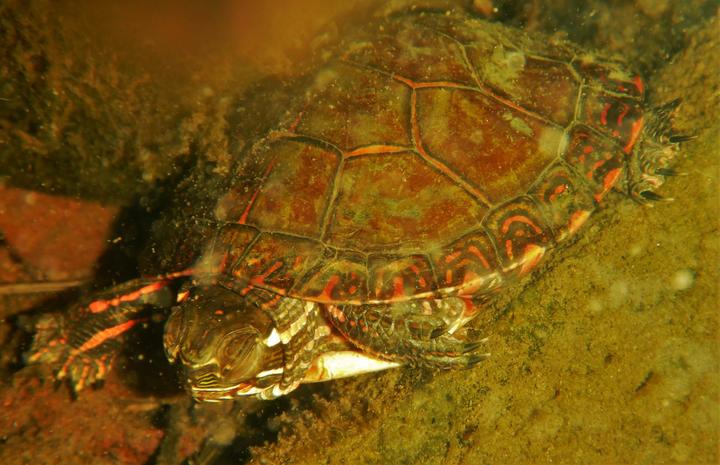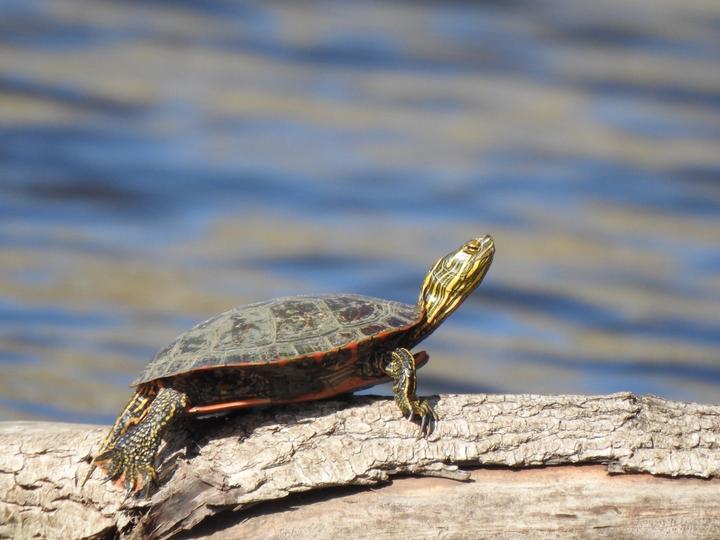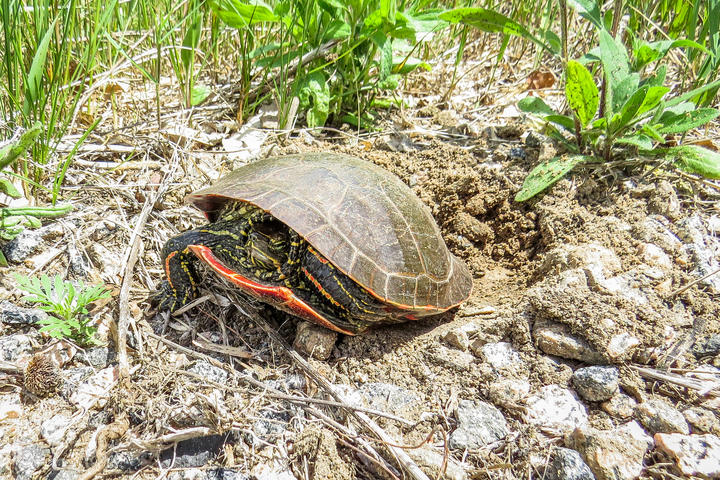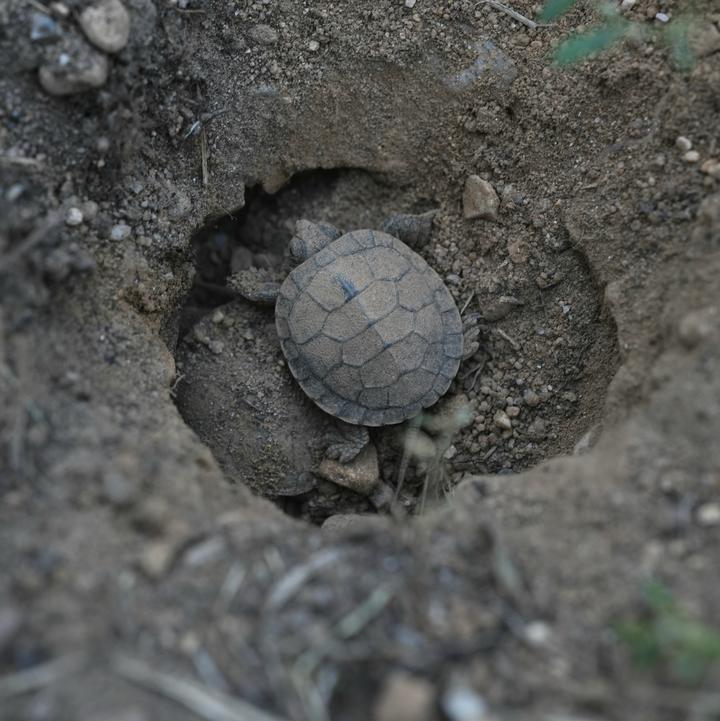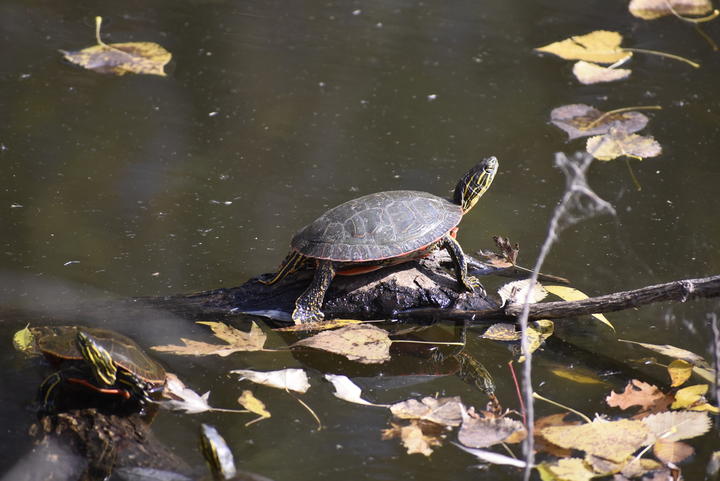More names for this animal
Anishinaabemowin: Miskwaadesi
Dakota: Patkaṡada (small turtle)
The Dakota and Anishinaabe were among the earliest people to name Minnesota’s plants and animals, as well as to understand them in relation to Minnesota’s climate and seasons. Those original names are still in use, and several are included on the Season Watch website.
Latin (or scientific name): Chrysemys picta
The scientific community has a convention of assigning agreed-upon Latin names to every kind of organism. Using scientific names helps people communicate confidently about the same organism and organize lifeforms based on how closely related they are.
More common names: Mud turtle
Page contents
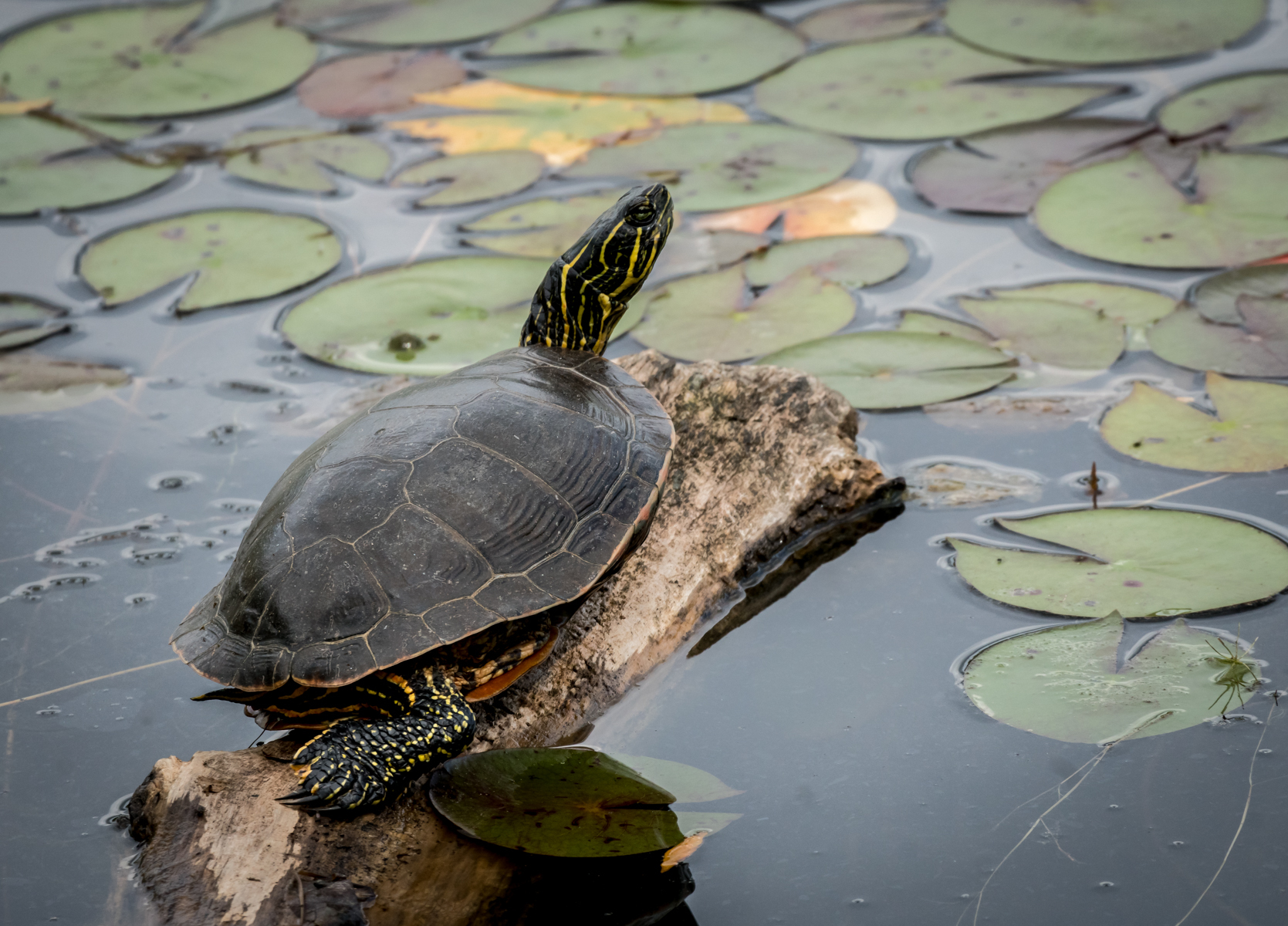
Photo © Janet Nelson, some rights reserved (CC-BY-NC-ND)
iNaturalist observation
About the painted turtle
- Painted turtles get their name from their shell's underside, which is orange and beautifully patterned. Their upper shell is smooth and dark, and their head and feet are black to brown with yellow stripes.
- They are usually about seven inches in length. Males are generally slightly smaller than females.
- Painted turtles are found near lakes, rivers, and ponds throughout Minnesota.
- Late winter to early spring is the time of year when painted turtles breed. In early summer, females typically lay five to six eggs, which hatch about eighty days later.
- In winter, painted turtles brumate, which means they retreat underwater and their metabolism slows. They can survive months without food or coming up for air. This video explains some adaptations that painted turtles have to survive harsh winters.
Visual guide to phenology
Watch for painted turtles' presence (or absence), abundance, and behaviors at different times of year. Also, pay attention to when young-of-year appear and develop.
Note to observers
This page explains general clues to watch for when observing painted turtle phenology. However, this page does not explain how to identify this animal or collect data in a standardized way.
- For help with identification, see a field guide or the Minnesota DNR's webpages on reptiles and amphibians.
- For guidance on collecting data, see Nature’s Notebook.
Graphs and historical data
Note: The Orientation Center provides a map, as well as information on reading graphs; interpreting summary statistics, who collected the data and how; and how to download datasets for independent exploration.
First seen
- Earliest: March 28 (occurred in 1999)
- Average: April 21
- Latest: June 1 (occurred in 2013)
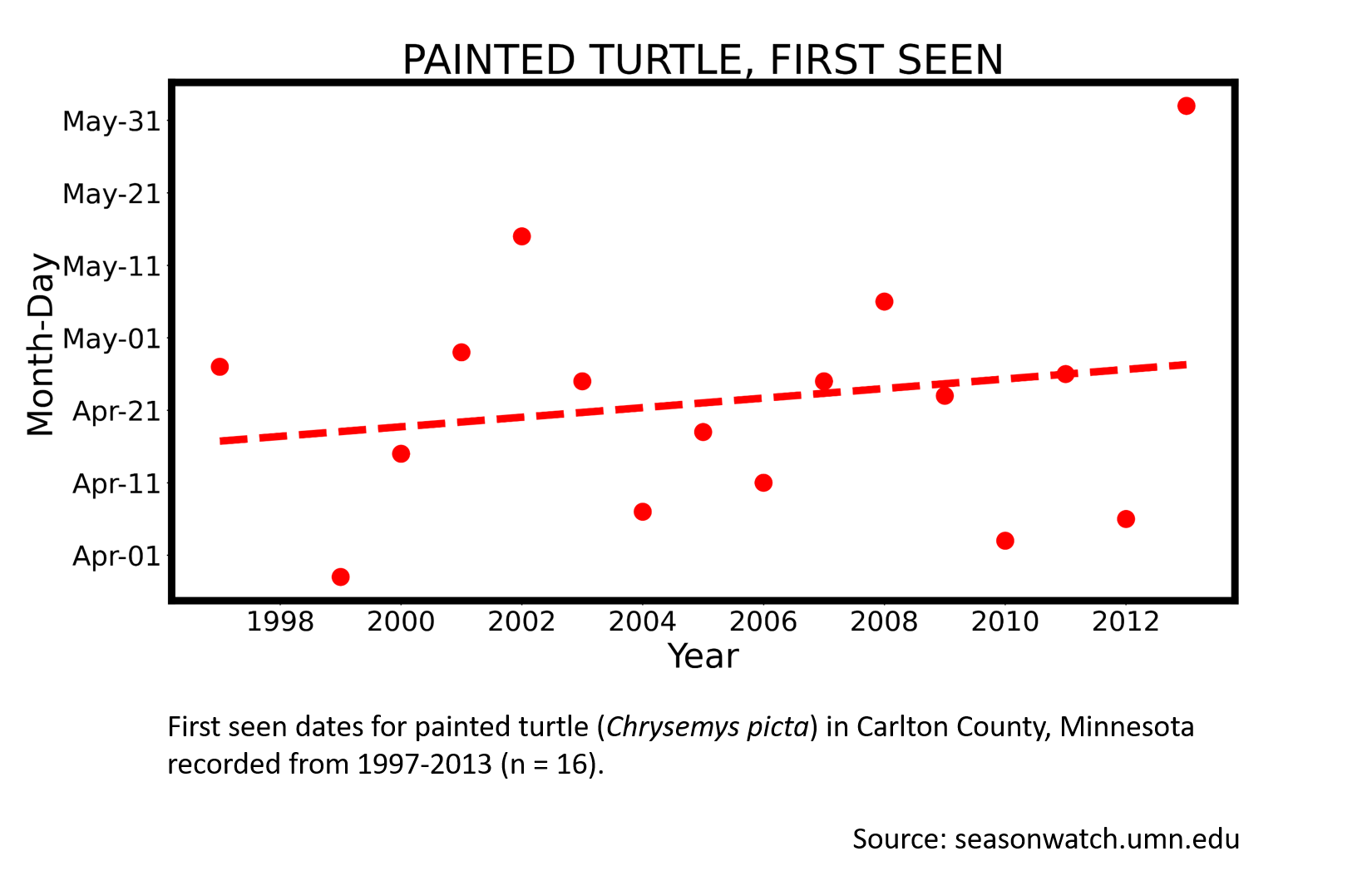
Eggs
- Earliest: May 22 (occurred in 2007 and 2012)
- Average: June 1
- Latest: June 16 (occurred in 2013)
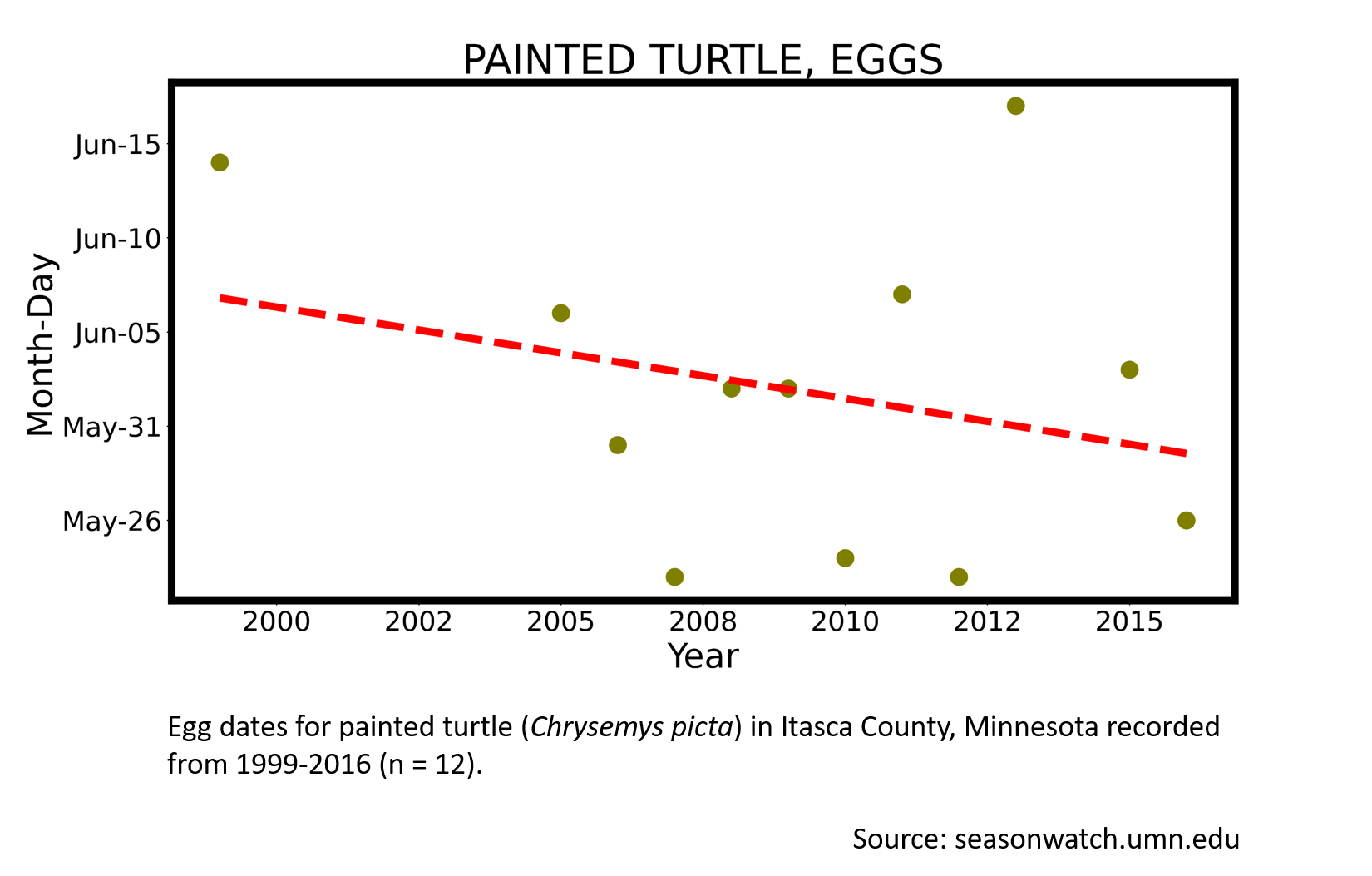
More resources
Keep exploring Season Watch
Keep exploring Season Watch
Co-author: Lynsey Nass, Minnesota Master Naturalist
